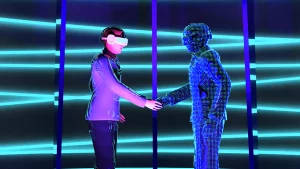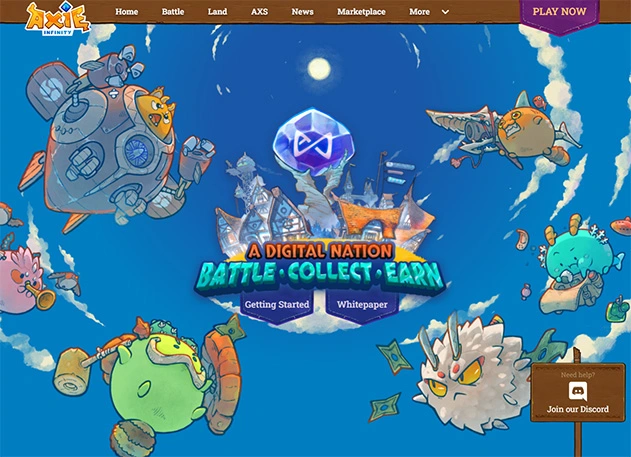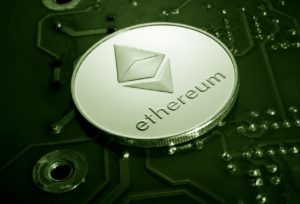
What is the Metaverse?
Is the metaverse the future? From Mark Zuckerberg changing the name of Facebook to Meta, to games that generate various incomes for their users, the metaverse seems to be the future of how we interact with each other.

An NFT or Non-Fungible Token, for its acronym in English, is a token or unit of unique and unrepeatable value, which represents the ownership over a physical or digital good and its characteristics.
The development and boom of NFTs has brought us crypto art and digital collectibles, but it has the possibility to become much more than that. From real estate to business logistics, NFTs can be used to prove the authenticity of many exclusive and collectible products.
The image you see below is the NFT CryptoPunk 3100, which sold for $ 7.58 million in March 2021.

To understand the impact of NFTs, we tell you that this same NFT was sold by the original creator in July 2017 for $ 2,127 dollars. Yes you read that correctly, only two thousand dollars, that is, its first buyer had a profit of 356,270%.
NFTs work through the blockchain, the same technology behind cryptocurrencies.
Do you want to understand how the Blockchain works? Click here.
The operation of NFTs depends on smart contracts, which is the base technology of Ethereum, (ETH), Polygon (MATIC), and many other projects.
Briefly, a smart contract is a small piece of programming language within the blockchain, which allows us to tell the network to store specific information that is part of a transaction.
In the case of NFTs, the information that we are storing in this transaction is a type of digital certificate of authenticity, which is a series of metadata that cannot be modified. In this metadata, the authenticity of this digital asset is guaranteed, the starting value and all acquisitions or transactions that have been made are recorded, as well as its author.
This means that if you buy digital content tokenized with an NFT, there will always be evidence of the first value it had, and how much you bought it for.
This digital certificate will certify that you own the original creation, even if it has been transferred multiple times between people until it reached you.
Remember that thanks to the principle of decentralization of the Blockchain, the information cannot be altered or erased by anyone individually, since this person or group would have to control at least 51% of the world nodes that make up the ecosystem, and that is impossible.
Just as there are many images and copies of the Mona Lisa, there is only one original, but that is based on the trust we give to the institution or government that protects that piece of art. Instead, in the Blockchain, the information about authenticity of an asset is public for all and safeguarded by all.
Nowadays, NFTs are already being used to validate authenticity in many industries that we will discuss just below.
Art NFTs have become a great sensation for blockchain and cryptocurrency lovers.
How to make digital art that cannot be copied?
How can you appreciate the value of digital artists, authenticate each of their pieces and create a marketplace where those are sold transparently?
These are the biggest questions that NFTs and the Blockchain have finally allowed to answer. Art has always existed, and it has always been sold for large sums of money, but until a few years ago, there was no perfect technology that would represent digital artists and create an efficient and transparent economy for them.
Crypto art gets most of its value by digitally verifying its authenticity and ownership. While anyone can see a CryptoPunk on the Ethereum blockchain and download or save the image to their PCs or smartphone, only one person can certify that he or she owns the original one, and this, thanks to NFTs.
There have always been people who are willing to spend large amounts of money to collect things that they like or have a lot of passion for.
NFTs now allow collectors to demonstrate that they own the token or authentic digital asset of something, and the asset they own is protected by the security of the Blockchain.
Sports teams are already starting to create their collectible NFTs and sell them on open NFT marketplaces for big bucks.
Argentine soccer player Lionel Messi, launched his own NFT art collection, with the highlights of his career in F.C. Barcelona. The name of the digital series is “Messiverse”, a word game between his name and terms such as universe and metaverse. It will be designed by artist BossLogic, recognized for his posters for Marvel movies. After reaching an agreement with the player, it will go on sale on the Ethernity Chain platform.
Another great example of a collectible NFT, is Jack Dorsey’s original 2006 tweet, when he founded Twitter.

NFTs games are now a very important part of the universe of NFTs. Microtransactions and shopping within video games have created a multibillion dollar industry, which is already being exploited by NFTs and blockchain technology.
For gamers and game lovers it is vital to know they can prove the authenticity of their characters, avatars and pets, as well as to know they can buy and share valuable digital items, which they own 100%.
A great example of this economy can be found in the game Axie Infinity (AXS). In this game you own or control pets named “Axies”, which you train and strengthen, so they can fight against other pets or monsters in different universes. You can also sell your Axies and exchange them with other players. You have true ownership over your Axies, and you can prove that, as these are NFTs created within a Blockchain platform.

Creating your own NFT, uploading it to an open NFT marketplace in order to publish it and put it on sale, is not as difficult as you think.
Here we discuss the main steps to create your own NFT, so you can have an idea.
Keep in mind there will be some fees to do this, as you will need to pay the gas fee of the Ethereum blockchain in order to mint (generate) your NFT.
If you want to learn more about gas fees, you can read this Ethereum article.
If you already have a digital art you want to sell and you feel ready to create a NFT, Sivarbit Academy and Michibit can help you. Join the guided tutorial here.
Today, there are already several marketplaces for buying and selling NFTs. In them, you can easily create an account, create your art galleries, and start uploading and selling your NFTs. And every day, there are new already established exchanges that are opening their doors to their own NFT marketplaces.
Opensea is a platform for sale and purchase of NFTs. It is the most popular and known platform nowadays.
Rarible is perhaps the second most recognized platform in the world of NFTs.
Binance, the largest cryptocurrency exchange in the world, launched its own marketplace for NFTs, on September 22, 2021.
Crypto.com, one of the fastest growing exchanges over the last two years due to its friendly mobile crypto platform, also joined the revolution of NFTs, launching its own marketplace on March 26, 2021.
Coinbase has just joined the NTF party, launching its own exchange platform. Coinbase has been around for a long time, but its NFT trading is relatively new.
We cannot give you that answer, because we are not financial advisors, but we can tell you this. If you enjoy art or collectibles, this may be right for you.
NFTs are definitely a new and immature market, where throughout the next few years, there will be many successes and failures to tell, just like when the internet was beginning its revolution in the late 1990’s.
If you have spent some considerable money in video games before, then there shouldn’t be much regret if you invest in NFTs within games like The Sandbox or Axie Infinity.
If you are investing your well earned money into an early phase technology like this, it must be because you’re in for the long term.
If you are thinking about investing, always remember to never invest money that you’re not willing to lose and only use recognized and secure marketplaces, like the ones we mentioned above.

Is the metaverse the future? From Mark Zuckerberg changing the name of Facebook to Meta, to games that generate various incomes for their users, the metaverse seems to be the future of how we interact with each other.

Ethereum is a digital platform based on the same technology behind Bitcoin, The Blockchain, but which serves as the basis for decentralized projects known as Dapps and smart contracts.
